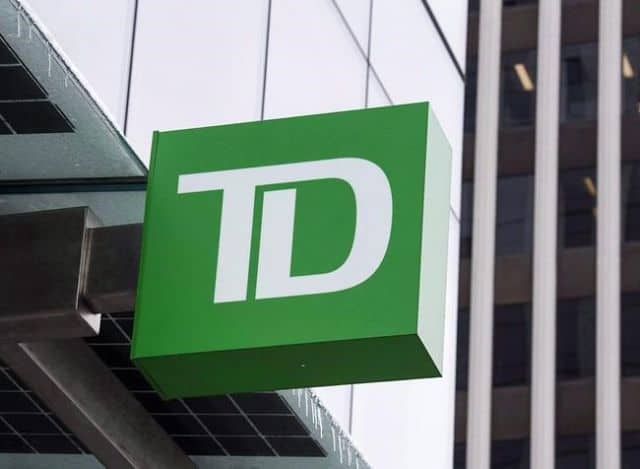
TD Bank Group’s third-quarter profit grew to $3.248 billion, helped by improved results across the bank and strength in its U.S. business in particular, but its latest earnings fell just shy of analyst estimates.
The Toronto-based lender said Thursday its net income amounted to $1.74 per diluted share for the quarter ended July 31, up from $3.105 billion or $1.65 per diluted share in the same quarter last year.
TD’s chief executive Bharat Masrani said its latest results reflected increased earnings and revenue growth across all of the bank’s business segments.
“Our record earnings are a testament to the strength of our diversified business model which enables us to enrich the lives of our customers as we continue to innovate for the future,” Masrani said in a statement.
On an adjusted basis, TD says it earned $1.79 per diluted share for the quarter, up from $1.66 per diluted share a year ago. Analysts on average had expected a profit of $1.80 per share for the quarter, according to the financial markets data firm Refinitiv.
“Overall, the results came in slightly below expectations despite a strong trading quarter that reminds us of the volatility of this line for this bank,” said CIBC Capital Markets analyst Robert Sedran in a note to clients.
The results came as TD’s Canadian retail business reported a profit of $1.89 billion, up roughly two per cent from $1.85 billion in the same quarter last year.
TD’s U.S. retail operations earned $1.29 billion in the quarter, up 12.6 per cent from $1.14 billion a year ago. TD Ameritrade contributed $294 million, up 31 per cent from $224 million a year ago, while the U.S. retail bank earned $993 million, up 8.2 per cent from $918 million.
The wholesale banking division, revenue from which primarily comes from capital markets and corporate and investment banking services, earned $244 million, up 9.4 per cent from $223 million a year ago.
Provisions for credit losses — or money set aside for bad loans — totalled $655 million, up from $561 million a year ago.
TD’s common equity tier 1 capital ratio, a key measure of the bank’s financial health, was 12.0 per cent at the end of its third quarter compared with 11.7 per cent a year earlier.


